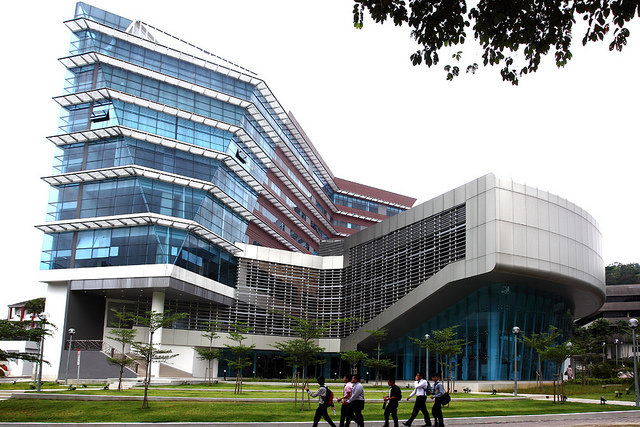According to The Times Higher Education (THE)’s 2017 Asia University Rankings, Malaysia has nine institutions in the top 300. The country’s highest ranking institution is a new entrant: the University of Malaya, placed 59th. It is joined by another new entrant, the Universiti Tunku Abdul Rahman (in the 111-120 cohort) in the top 120.
For the second year running, Singapore’s National University and China’s Peking University ranked first and second respectively. Only two Japanese institutions appear in the top 20, despite the country’s strong representation in the rankings with 69 universities included – almost a quarter (23%). After China with six universities in the top 20, Hong Kong and South Korea are well-represented with five institutions each.
| Institution | Rank 2017 | Rank 2016 |
|---|---|---|
| University of Malaya | 59 | New entry |
| Universiti Tunku Abdul Rahman (UTAR) | 111-120 | New entry |
| Universiti Putra Malaysia | 121-130 | 121–130 |
| Universiti Teknologi Malaysia | 121-130 | 70 |
| Universiti Teknologi Petronas | 141-150 | New entry |
| Universiti Sains Malaysia | 151-160 | 141–150 |
| Universiti Kebangsaan Malaysia | 161-170 | 161–170 |
| Universiti Teknologi MARA | 251+ | New entry |
| Universiti Utara Malaysia | 251+ | New entry |
Phil Baty, the editor of the Times Higher Education rankings, said: “It is great news that Malaysia has more than doubled its representation in this year’s ranking of Asia’s best universities, claiming nine places in the top-300 list (up from four last year).
“The University of Malaya is the nation’s number one institution at 59th place after taking part for the first time this year. The data show that it has a particularly strong international outlook when compared to other leading universities in the continent; it ranks 20th when measured on this indicator alone. Malaysia’s second-ranked university, Universiti Tunku Abdul Rahman (UTAR) in the 111-120 band, is also a newcomer.
“Malaysia’s success in this year’s ranking is partly due to expanding the table to include 300 universities, up from 200 last year. But it is also impressive that the country has done so well despite the increased competition and Malaysia’s own issues around funding. The only Malaysian university that has seriously declined is its former number one Universiti Teknologi Malaysia, which drops from 70th to the 121-130 band, due to lower scores in terms of its research influence (citations).
“Malaysia invests a huge amount in higher education and has marketed itself as a knowledge economy and innovation hub in recent years. Student enrollment has also risen by 70% in the past decade and the country has one of the fastest growth rates in research paper outputs in the world. With a GDP per capita (PPP World Bank 2015) of $26,950, well above the world average of $15,546, Malaysia is also becoming a wealthy country.
“However, the nation’s public universities were hit by a 15% budget cut last year, after the economy came under pressure from lower oil and commodity prices. University Teknologi MARA, for example, faced a cut of over 23%. The nation also performs poorly in terms of its availability of higher education; just 6% of the university-aged population in the country attend one of the nine institutions in the ranking.
“Overall this ranking of Asia’s best 300 universities proves what a dynamic, diverse and competitive higher education region the continent is becoming. Malaysia is a key part of that development but must make sure it does not get left behind.”
"ExpatGo welcomes and encourages comments, input, and divergent opinions. However, we kindly request that you use suitable language in your comments, and refrain from any sort of personal attack, hate speech, or disparaging rhetoric. Comments not in line with this are subject to removal from the site. "





















